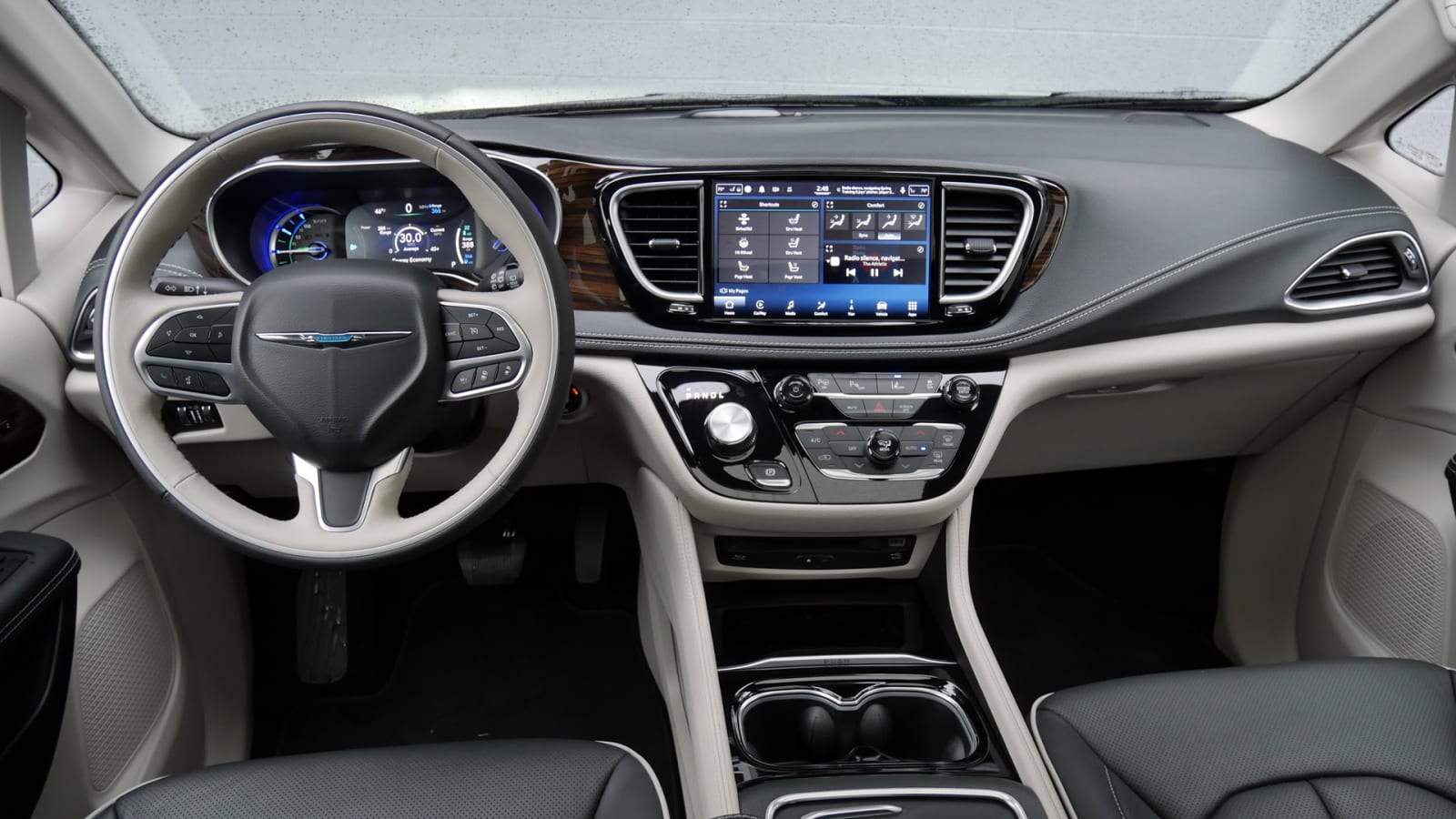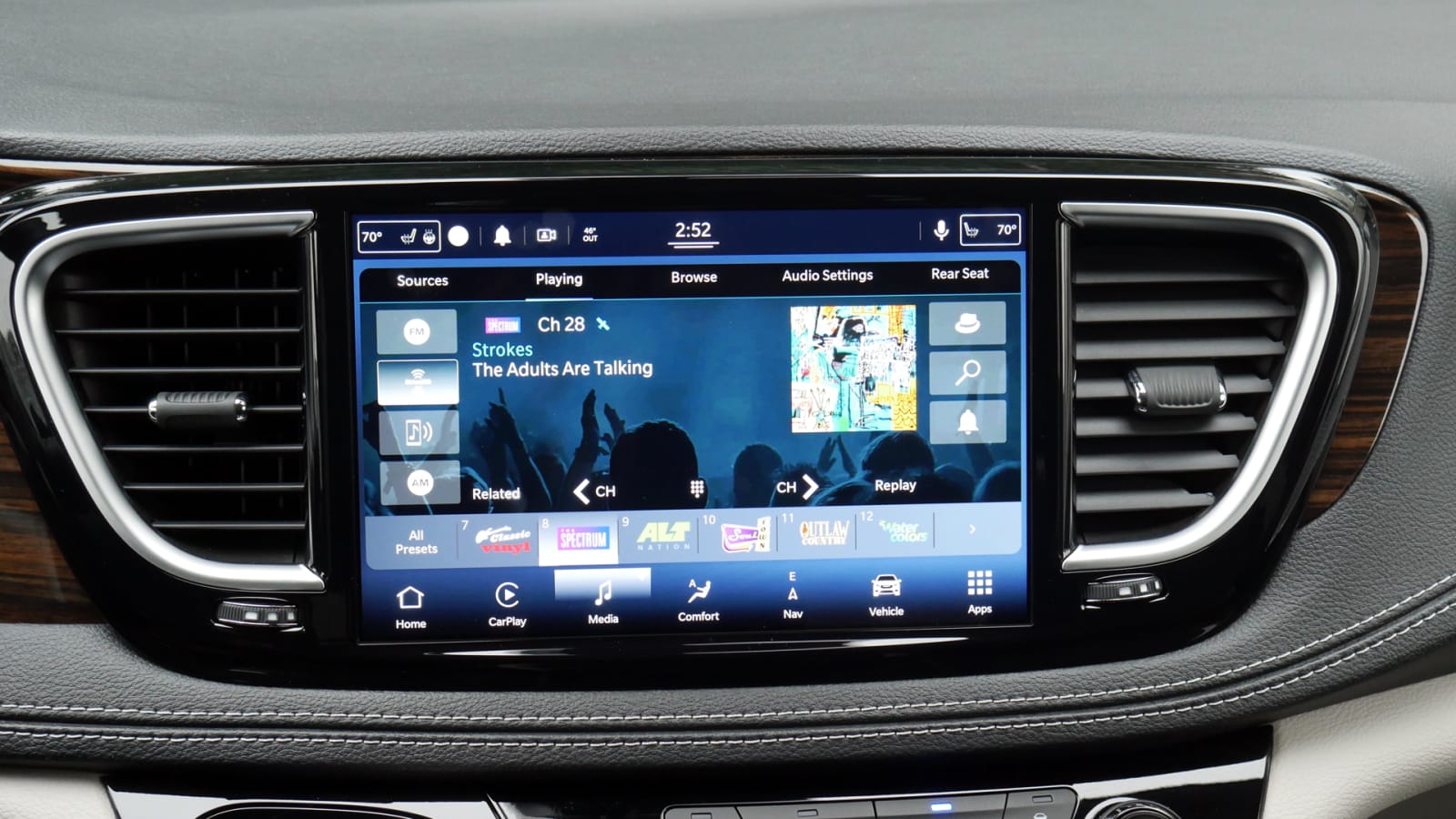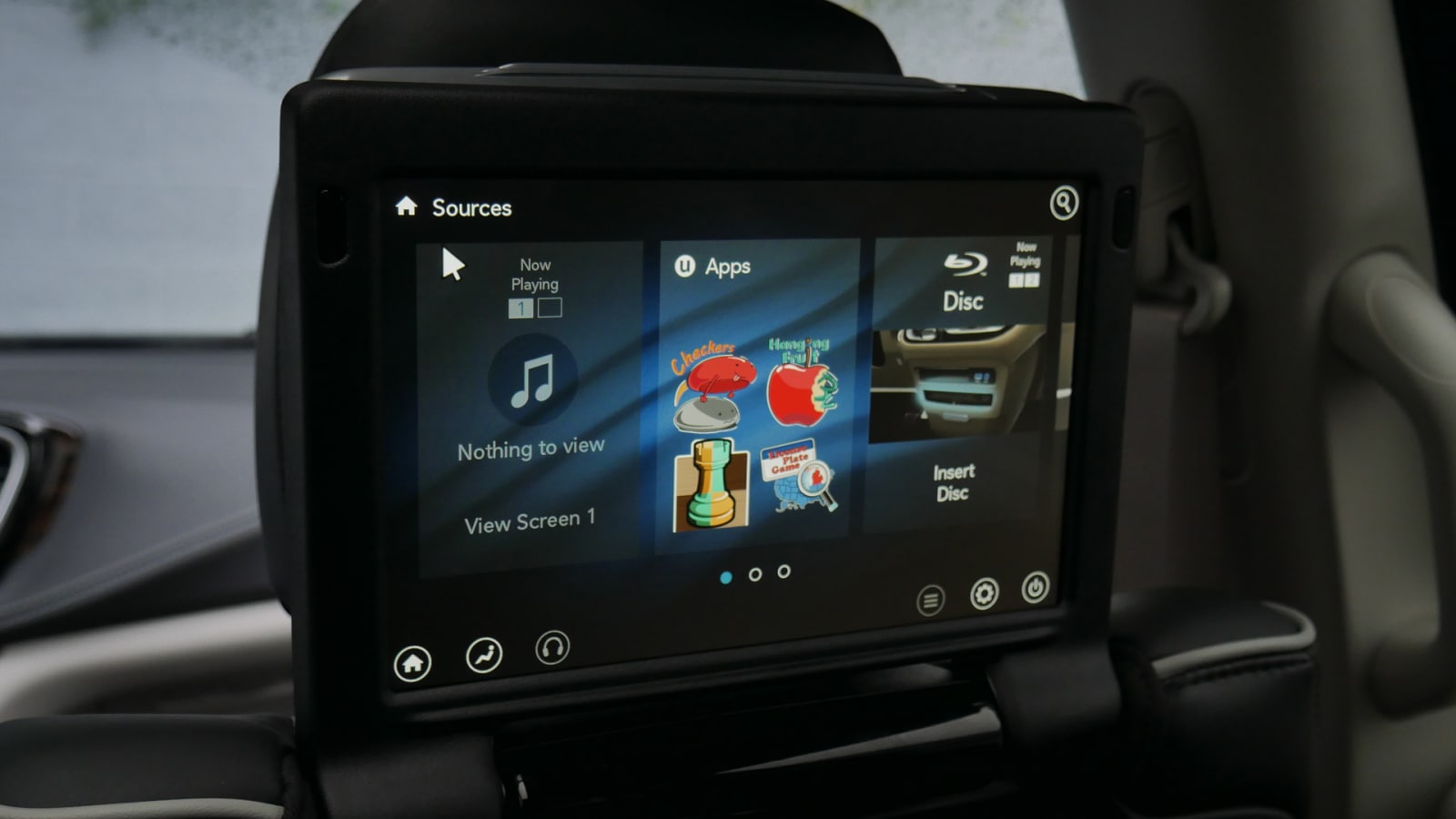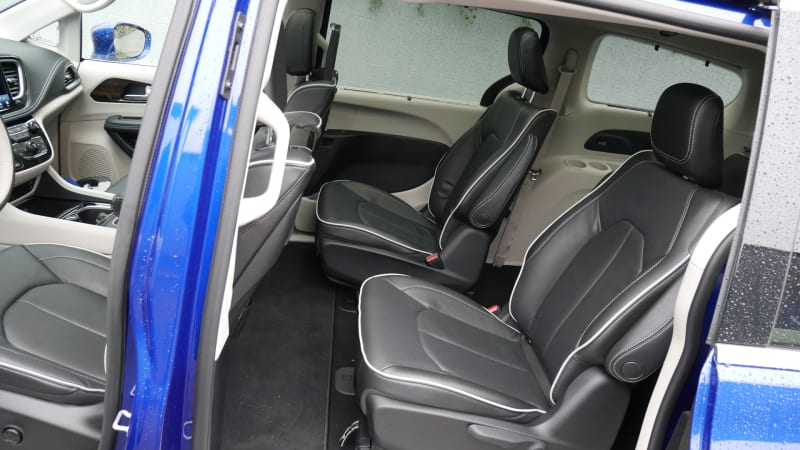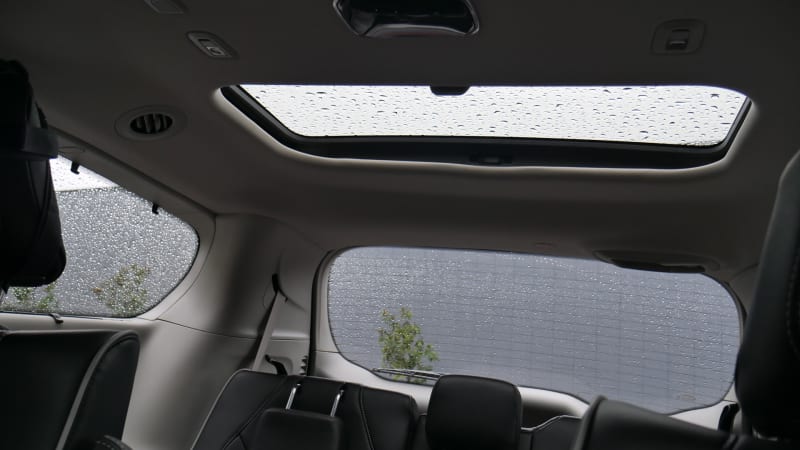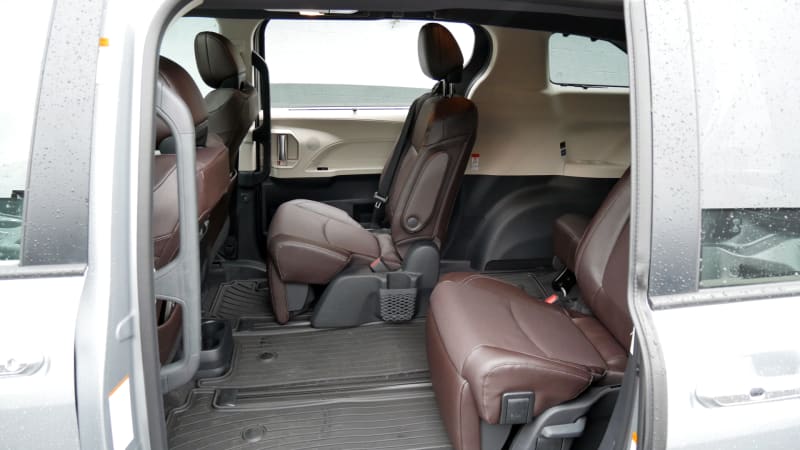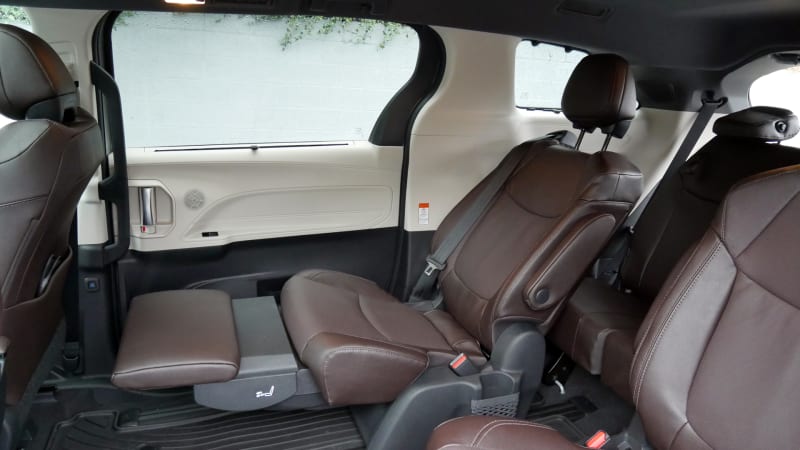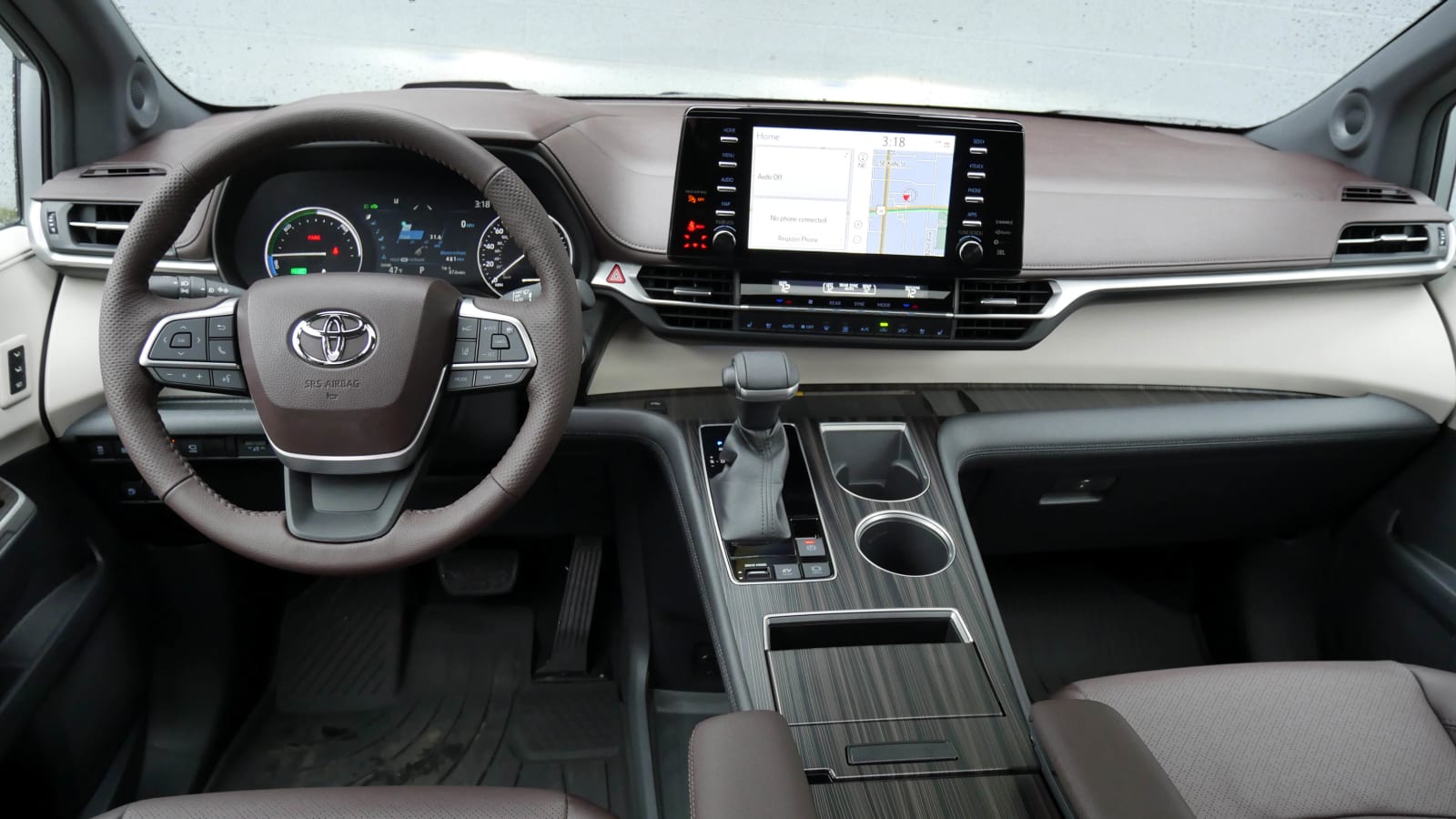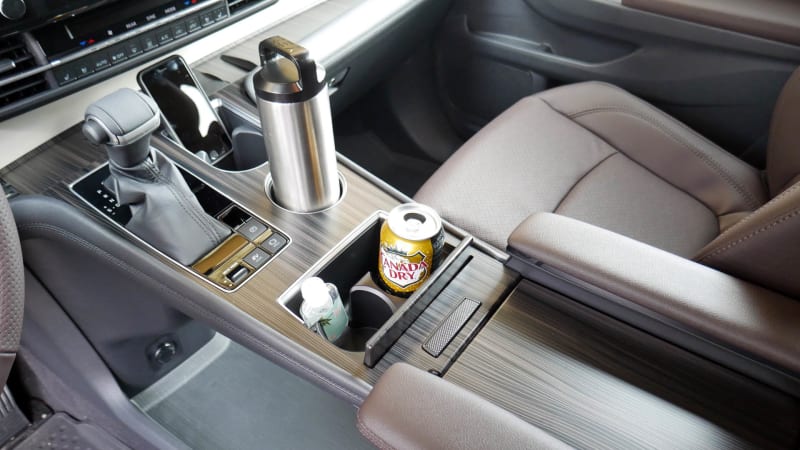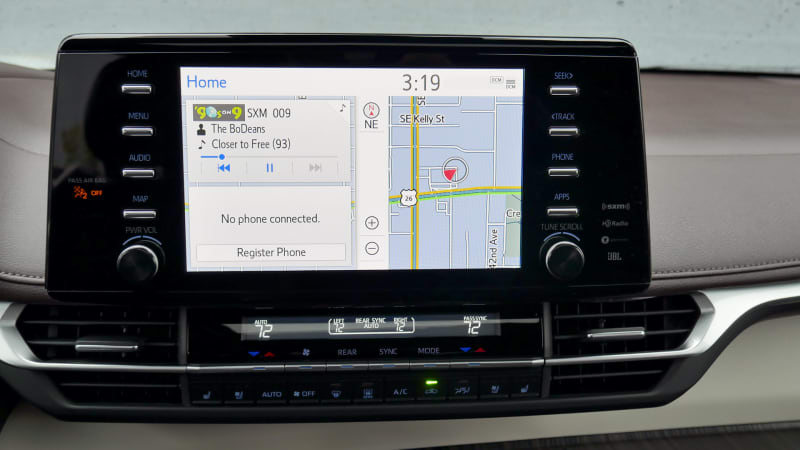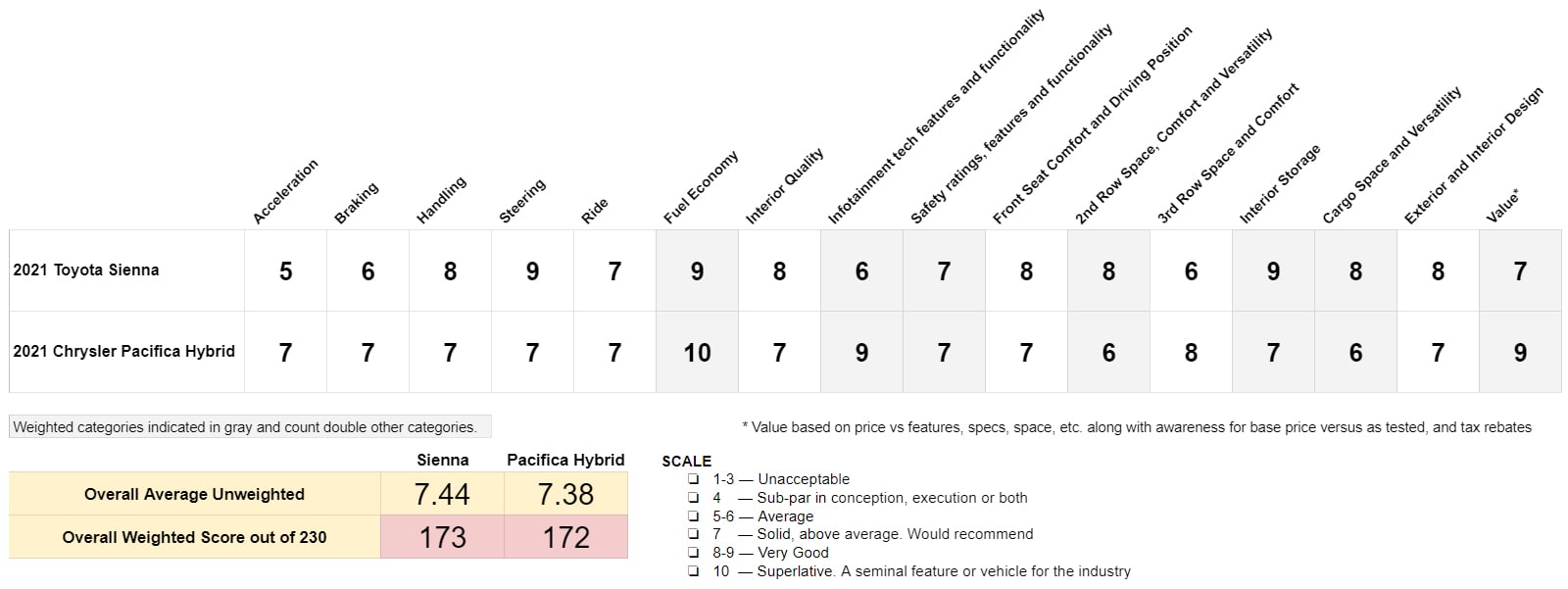Shopping for a new car can be difficult due to the sheer number of choices. Which brand do you start with, which do you skip and are you missing something worthwhile? Thankfully, minivans are much simpler. There are effectively only four choices, they’re all pretty good and they’re even different enough to make choosing the right one for you a bit easier.
This comparison features the two most recently updated minivans: the all-new 2021 Toyota Sienna versus the refreshed 2021 Chrysler Pacifica Hybrid. Besides their common newness, they stand out in another fundamental way: they’re both hybrids. Now, they’re very different hybrids – the Toyota comes standard with a traditional gasoline-electric system like that of a Prius, whereas the Pacifica is offered with an optional plug-in hybrid system that provides an estimated 32 miles of all-electric range before effectively turning into a traditional hybrid – but in both cases, fuel economy is the priority.
With the rare exception, the minivan segment has exclusively used V6 engines, which provide sufficient power to move hefty loads of people and stuff. The Chrysler Pacifica comes standard with a V6, while a V6 is the sole powertrain option for the Honda Odyssey and upcoming Kia Carnival. The fuel economy difference between those and our hybrid competitors is staggering: The new Sienna gets an EPA-estimated 36 mpg combined while the Odyssey and V6 Pacifica get 22 mpg. That equates to saving an estimated $750 every year on gas, according to the EPA. And the Pacifica Hybrid could potentially save you even more as long as you routinely utilize its electric range.
This frugality alone could send the Sienna and Pacifica Hybrid to the top of many shopping lists, but as we’ve seen in previous tests, they offer more than enough in other respects to warrant top consideration. But which is better, Sienna or Pacifica? Well, we knew this was going to be close, and we were right. After averaging the scores from 16 categories, the difference between first and second was a mere 0.06 out of 10. When we added extra weight to key minivan-buying attributes (second-row space/versatility, safety features and functionality, infotainment, interior storage, cargo space/versatility, value and fuel economy), the gap was only 1 point out of a possible 230. We then triple checked and conducted a recount, but the order remained. In the end, there are no losers here.
Second Place: 2021 Chrysler Pacifica Hybrid
The 2021 Pacifica Hybrid is different enough from its V6-only sibling that it could arguably be considered a separate model (more so even than the stripped-down Chrysler Voyager budget version). The presence of the hybrid battery pack results in fundamental changes that not only affect fuel economy, but acceleration, handling, comfort and interior functionality. They ultimately make for a better minivan, and it’s certainly the Pacifica we recommend – and yes, despite coming in second here, we definitely still recommend the Pacifica Hybrid.
In terms of efficiency, you literally cannot do better than this plug-in hybrid minivan. If you plugged in every night and kept your daily school dropoffs and errands within its 32 miles of range – a distinct possibility – trips to the gas station would be extremely rare. However, once that range is gone, the V6 engine and the van’s heftier weight cause that efficiency to plummet. Even with two full charges, we managed 33.4 mpg over the course of 119.5 miles, much of which was on rural state highways. That compares to the EPA-estimated figures of 30 mpg combined when no electric range is included, or 82 mpg-E, which is as much an algorithm as it an estimate. That’s also only 3.8 mpg better than what we managed in the Sienna at 29.6 mpg, which itself is well south of the EPA estimate of 36 mpg.
Maybe we just have lead feet, but either way, let’s not lose sight that both vans got sensational fuel economy compared to the segment’s V6-only norm of around 22 mpg combined. You’re going to save a ton of money with either, but just know that the more you drive on the highway and the less you recharge, the less efficient the Pacifica Hybrid gets.
On the other hand, the Pacifica has a clear acceleration advantage over the Sienna. Although various 0-to-60-mph tests by other publications have shown the Chrysler to be quicker by only a half second or so, it feels far quicker around town and when passing on the highway due to the superior torque provided by its more prevalent electric motor and V6 engine (the Sienna has a four-cylinder). Whereas the Sienna felt strained going up hills, its e-CVT droning as Toyota hybrid systems are apt to do, the muscular Chrysler smoothly and effortlessly moved forward. Its electric propulsion makes it feel quicker than other gas-only minivans as well, including the regular Pacifica.
![]()
![]()
![]()
The Chrysler’s other clear advantage is its in-car infotainment, both for the driver and those in the back. The 10.1-inch Uconnect touchscreen you see here is not only standard for 2021, but it’s an all-new unit (termed Uconnect 5) with beautiful graphics, rapid responses and a revised user interface. It looks better than the Sienna’s and it’s easier to use. It can also be upgraded with the FamCam, which fills the touchscreen with a birds-eye image of the two rear seating rows. The Odyssey offers something similar, but we greatly prefer the Pacifica’s camera placement between rear rows (as opposed to above the second) and appreciate the ability to zoom in on one seat. One minor complaint: it would be nice if FamCam didn’t take over the entire screen, therefore removing the menu icons normally docked at the top and bottom. It was annoying going back and forth between FamCam and satellite radio.
FamCam comes in the same $2,495 Uconnect Theater Family package that adds the Pacifica’s unique rear seat entertainment system: a flip-up touchscreen, HDMI and USB ports, and a headphone jack on the back of each front seat. This eliminates the kids fighting over what to watch or play as they’ll have to with the Sienna’s single, roof-mounted screen (its system is $1,415). Given the increased commonality of tablets and other hand-held devices, we wonder how relevant rear-seat entertainment systems are to today’s minivan buyers, but the Pacifica’s is nevertheless far superior.
![]()
![]()
That cannot be said of the Pacifica’s second-row seats. Though they recline more than the Sienna’s veritable La-Z-Boys, their sliding distance is comparatively minuscule, which limits sprawl space, third-row access and cargo versatility. And no, the Pacifica Hybrid does not have Chrysler’s Stow ‘N Go seats. The hole those would normally drop into is filled with batteries. The upside, at least relative to other Pacificas, is that these seats are far more comfortable and basically indistinguishable from those up front. They even have prominent bolsters that pushed our infant car seat base a few inches forward from the seat back (only a problem in terms of clearance to the front seat).
Finally, there’s the matter of value, and it’s very complicated. If we simply went by our test vehicles, a Pacifica Hybrid Limited versus the Sienna Platinum, the Chrysler would be a bargain. It stickers at $49,835 versus the Sienna’s $53,666, and although it doesn’t have quite as much equipment, what’s missing sure doesn’t add up to nearly $4,000. Plus, and here’s Part 1 of the complicated bit, the Pacifica is eligible for a $7,500 federal tax credit. That would bring its price tag down to at least $11,331 less than the Toyota. Yes, you’ll need to wait until your tax refund shows up (and you’ll need to pay at least $7,500 in federal taxes), but come on, that’s huge.
Part 2, however, is that the base Pacifica Hybrid starts at $41,490 versus the base Sienna at $35,635. Subtract the federal tax credit and that’s a difference of only $1,645. Considering that the Toyota has a few more standard features and numerous advantages you’re about to read about, plus the fact that you’d basically need to wait a year before you saw that $7,500 on your taxes, the equation is changed dramatically. Again, it’s complicated, but even if we granted the Pacifica Hybrid a significant value advantage, it wasn’t enough to eke ahead of the Toyota.
First Place: 2021 Toyota Sienna
To put it simply, the new 2021 Sienna does a better job of being a versatile parenting tool while simultaneously doing a better job of helping you forget you’re driving a parenting tool.
That versatility is best seen in two key areas that were weighted more heavily in this comparison’s scoresheet: storage and second-row functionality. We went full James Cameron in our Sienna Interior Storage Deep Dive, filling all 18 cupholders and finding places to store a diaper-changing clutch. We actually did the same test with the Pacifica, and although it provides more storage than your typical big crossover, its ability to stow small and big items alike was inferior to the Sienna. In particular, Toyota’s innovative two-tier center console provides a vast space to store a large purse like minivans always used to do, but keeps it off the ground and keeps it from sliding with a rubber bottom. The console’s enclosed bin is bigger than the Pacifica’s as well, it has four cupholders (plus two in each door) and its height is one of those elements that makes the Sienna feel more crossover-like when behind the wheel.
The second row, meanwhile, is Toyota’s “Super Long-Slide” seats that thoroughly live up to their name. They can be pressed right up against the third row to provide Anthony Davis with enough room to sprawl out, or pushed all the way up against the front seats (the seat bottoms even fold up) to provide far more maximum cargo length than the Pacifica Hybrid can manage. This seat design comes standard on all seven-passenger Siennas; the eight-passenger model’s outboard seats don’t slide as much, but they’ll still go farther than the Chrysler’s. The Limited and Platinum trims even include a pop-out ottoman, which, thanks to the extra-long sliding length, are useable for even a 6-foot-tall passenger. There’s no doubt which of these back seats older kids would prefer. The sliding capability also makes it easier when using child seats, be it moving them closer to mom and dad up front, or further way to mitigate the scourge of kicking or to let you still enter the van from the same side when a rear-facing seat is installed.
![]()
![]()
The third-row seat bottom isn’t as deep as the Pacifica’s, and the windows back there are small, providing a bit of darkened dungeon vibe. That the Pacifica had a light-colored cabin and a skylight over the third-row enhanced its comparatively airy feeling. However, the Sienna’s third row is much easier to raise and lower, with less muscle required. Both vans could carry virtually the same amount of items in our luggage test, in which they matched the Honda Odyssey.
But now let’s turn our attention to the driver, which in this test included both myself (West Coast Editor James Riswick) and my wife (Chief Minivan Testing Consultant Sarah Riswick). She astutely noted that while the Pacifica Hybrid felt faster in a straight line because of its greater power, the Sienna felt like it could go faster due to its more composed handling and sharper steering. The latter even includes a Sport mode, which subtly increases weighting to improve things further. Even with its power disadvantage and droning engine note, the Sienna is the best minivan to drive whether on a winding road to a ski resort or just driving to Safeway. And remember, we were testing the Platinum model. There’s also the even sharper-driving Sienna XSE trim.
![]()
![]()
![]()
Like its more engaging driving experience, the Sienna’s handsome and higher-quality cabin didn’t count for as much on the score sheet as more practical considerations, but it’s an advantage nevertheless. Its driver-canted touchscreen, high console and traditional shifter in particular are decidedly un-van-like – and that’s taking into consideration how good the Pacifica cabin looks compared to the frumpy Honda Odyssey.
Otherwise, the two vans scored similarly in terms of ride comfort, front seat comfort and adjustability, and its safety credentials. For the latter, each come standard with a comparable array of driver assistance features that work in an agreeable manner. Both vans also get perfect crash scores from the Insurance Institute for Highway Safety. It’s also worth noting that the Sienna’s low points are always followed by a warranted “yeah but.” It’s slow for a minivan, but it feels quick enough around town and its fuel economy is still exceptional. Its infotainment isn’t as good as the Pacifica’s, but it’s still perfectly easy to use. Its third row is less comfortable, but it’s easier to stow away.
In the end, the Sienna wins this test by literally the narrowest of margins, but both are so close and so good that personal preference and circumstance effectively makes it a coin flip. Maybe you like the Sienna’s styling better. Maybe you don’t have anywhere to plug the Pacifica in. Maybe, like our Chief Minivan Testing Consultant, you dislike the Toyota’s firm brake pedal.
We’d love to definitively say “buy this one,” but a declaration of “consider one of these first” seems like an acceptable conclusion.
![]()
Source link


